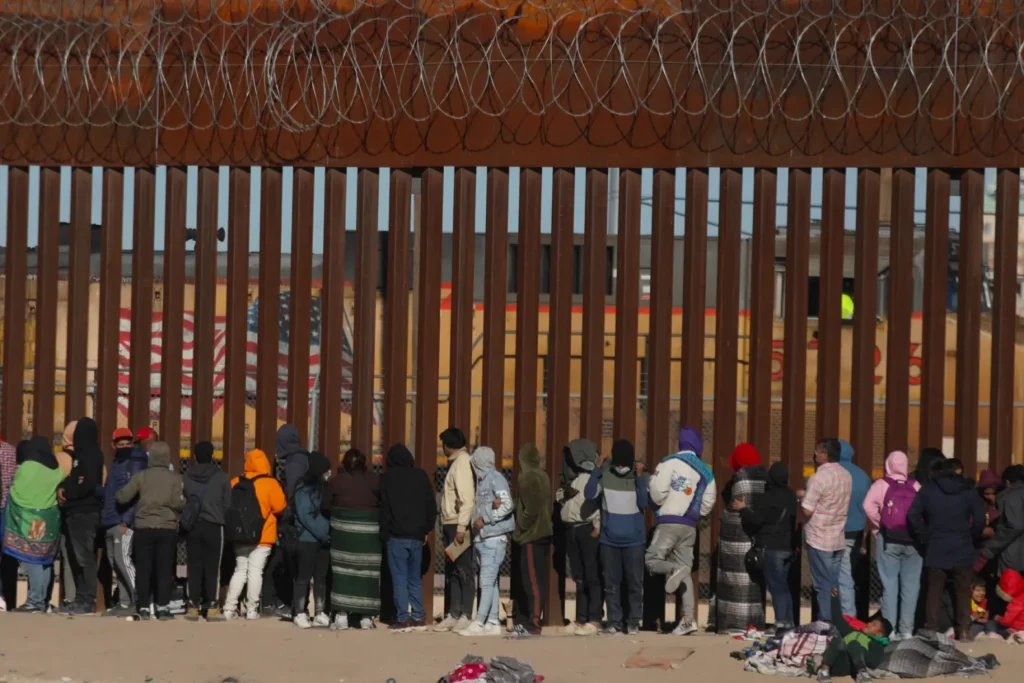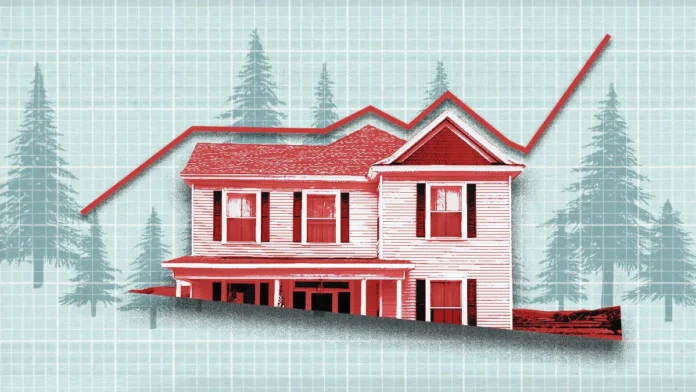Introduction
Immigration crackdown policies could significantly impact the U.S. housing market by reducing the construction workforce and driving home prices higher. A recent study led by a University of Utah professor suggests that strict immigration enforcement may worsen affordability rather than improve it.
The State of the Housing Market
Americans are facing a severe housing affordability crisis. Home prices have soared since the pandemic due to high demand and low inventory. Even as mortgage rates rose following the Federal Reserve’s rate hikes in 2022, housing remained unaffordable for many buyers due to persistent supply shortages. The issue extends beyond homebuyers—rental prices have also increased, making it difficult for lower-income individuals to find affordable housing. Rising construction costs, labor shortages, and bureaucratic red tape have further contributed to the crisis.
How Immigration Crackdowns Impact Construction
During his 2024 presidential campaign, Donald Trump pledged to make housing more affordable by increasing inventory. However, experts warn that his proposed immigration crackdown could reduce the construction workforce, ultimately leading to a decline in homebuilding and higher home prices.
According to a study by University of Utah assistant professor Troup Howard, stricter immigration enforcement results in fewer workers in the construction industry, causing significant drops in residential homebuilding. The research analyzed the effects of immigration policies on counties that implemented the Secure Communities program—a major federal immigration enforcement effort. Data from this program indicates that as deportations increased, construction productivity significantly declined, which, in turn, stalled new housing projects and raised costs for developers and homebuyers alike.

The Link Between Deportations and Home Prices
Howard’s study found that mass deportations could cause:
- A reduction in construction labor supply.
- A decline in homebuilding, worsening the housing shortage.
- Higher home prices due to decreased housing supply.
- Increased labor costs, making home construction more expensive.
- Longer construction timelines, delaying new housing projects.
Even though some U.S.-born workers may replace deported laborers, the research suggests that domestic workers only partially fill vacated construction jobs. This means that deportations don’t necessarily translate to more employment opportunities for U.S. citizens—instead, they create net job losses. Skilled construction workers are already in high demand, and removing a significant portion of the workforce only worsens the labor gap, leading to bottlenecks in the construction process.
The Broader Economic Impact
The economic effects of a shrinking construction workforce extend beyond home prices. A reduction in homebuilding can also negatively impact related industries, such as manufacturing, retail, and banking. When new homes aren’t built, fewer appliances, flooring materials, and furnishings are purchased, leading to slower economic growth in these sectors. Banks and mortgage lenders also see decreased activity, which can have ripple effects throughout the financial system. Additionally, local governments that depend on property tax revenues from new developments may face budget shortfalls, impacting public services such as education and infrastructure maintenance.
Expert Insights on Immigration and Housing
Industry leaders agree that restricting immigration could harm the construction sector. Realtor.com chief economist Danielle Hale has stated that labor shortages would make it harder for companies to hire workers, particularly in construction. Likewise, real estate expert Cynthia Seifert warns that these labor shortages could lead to higher costs and project delays. A prolonged labor shortage in construction could mean that large-scale infrastructure projects, such as roads, bridges, and schools, could also face setbacks, affecting communities nationwide.
However, some industry figures believe that Trump’s proposed lower tax environment and deregulation efforts could offset the impact of labor shortages. Christian Faes, CEO of Faes & Co, argues that while labor costs could rise, deregulation could still benefit homebuilders in the long run. He suggests that reducing bureaucratic barriers for developers, such as zoning laws and permitting processes, might help mitigate some of the adverse effects of labor shortages.
Can Deregulation Solve the Crisis?
While some believe that zoning reform and deregulation will increase housing supply, Howard’s study suggests that these policies alone may not be enough. Even if local governments streamline the building process, construction still requires skilled labor—which could be in short supply if mass deportations occur.
Furthermore, while lower taxes and fewer regulations may encourage developers to build, they do not address the root issue of labor availability. In addition, there are concerns that deregulation could lead to lower-quality construction and reduced safety standards, which may negatively impact homebuyers and renters in the long term.
What’s Next for the Housing Market?
With affordability already at historic lows, policies that further shrink the construction workforce could exacerbate the crisis. The research highlights the importance of balancing immigration policies with economic realities—particularly in industries like housing, where labor shortages could have long-lasting consequences. Policymakers will need to consider how to balance enforcement measures with economic stability, ensuring that any immigration policies implemented do not inadvertently worsen the housing crisis.
Some analysts suggest that a combination of targeted immigration policies, workforce development programs, and incentives for skilled labor could help address the issue. For example, expanding visa programs for skilled construction workers could help bridge the labor gap while maintaining stricter enforcement for undocumented workers in other sectors.
As the debate over immigration crackdown policies and economic strategy continues, the housing market remains caught in the middle. Whether Trump’s policies will ease affordability or worsen supply shortages remains to be seen, but one thing is clear—housing policy and immigration policy are deeply intertwined, and any major shifts in one will inevitably affect the other.


